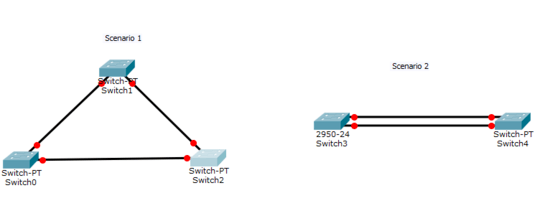7
So I know how switch learns MAC address. It sends packet through all(if needed) ports, while it get a answer from destination and marks it to that port.
I have a few questions:

Scenario 1: How will it learn the MAC address? Switch1 can reach Switch2 through Switch0 or it can go directly to Switch2? How will it be? What if Switch2 was connected later?
Scenario 2: What about this one? It can go from (lets assume) port 1 to port 1, or it can go from port 2 to port 2. Will it make a loop?
1In the scenarios you describe do you have a managed switch or an unmanaged switch? – Ramhound – 2017-02-24T15:44:01.827